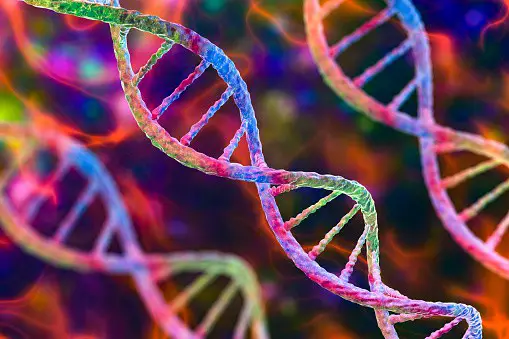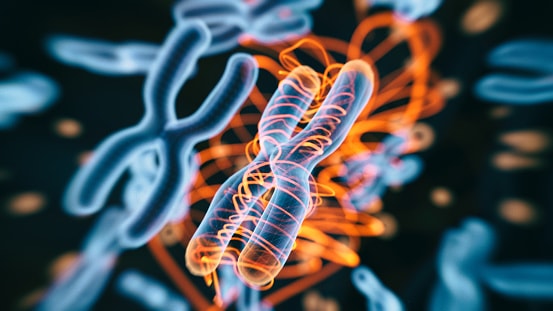
Ciliary Genomics And Rare Genetic Disorders: Shedding Light On The Unknown
Welcome to the world of ciliary genomics and rare genetic disorders! As a writer specializing in this field, I’m passionate about exploring how these two topics are connected. Ciliary genomics is an emerging area of genetics that has become increasingly important for diagnosing rare diseases and helping those affected by them. Meanwhile, rare genetic disorders can be devastating for families and individuals alike; understanding more about them could provide hope for those who suffer from them. In this article, we’ll look at how ciliary genomics is helping shed light on the unknown when it comes to rare genetic disorders.
The first paragraph introduces readers to why ciliary genomics and rare genetic disorders are so intertwined. For starters, mutations in genes associated with cilia can lead to serious medical conditions – including some rare genetic disorders. We’ll explore what happens inside cells when these mutations occur, as well as how they might manifest into various symptoms or syndromes. With advances in sequencing technology, scientists have been able to identify many previously undiscovered gene variants that may give rise to certain types of rare diseases.
Finally, we will discuss current research efforts aimed at better understanding the underlying biology behind certain common forms of inherited disease caused by faulty genes related to cilia pathways. By looking closely at specific gene-disease correlations, researchers hope to uncover new treatments for those suffering from such debilitating illnesses. So let’s dive deeper into this fascinating topic and see where our journey takes us!
Definition Of Ciliary Genomics
I’m going to talk about ciliary genomics and rare genetic disorders. Ciliary genomics is the study of genomic variation in cells surrounding a nucleus, called cilia, as well as their associated molecular mechanisms. This research has enabled us to better understand how these variations can lead to rare genetic disorders.
Cilia are involved in many vital processes, ranging from development and cell communication to motility and metabolism. Variations in the DNA sequence or structure of cilia have been linked to various diseases such as primary ciliary dyskinesia (PCD) and Kartagener’s Syndrome (KS). These conditions are caused by defects in the assembly or functioning of cilia which disrupts normal cellular activities. Understanding ciliary genomics has helped scientists develop treatments for some cases of PCD and KS that improve patient outcomes significantly.
Due to its importance, it’s essential we continue exploring this field further – especially when it comes understanding rare genetic disorders. In the next section, I’ll discuss the characteristics of these types of conditions so we can get closer to finding more effective treatments.
Characteristics Of Rare Genetic Disorders

Now that we have a better understanding of ciliary genomics, let’s explore the characteristics of rare genetic disorders. It is important to note that these diseases are caused by a variety of reasons including:
-A genetic mutation (change in an individual gene)
-Genetic inheritance (passing on of genes from parents to offspring)
-Gene mutations (changes in the structure or composition of chromosomes).
Rare genetic disorders can be detected through physical changes, biochemical tests and/or DNA sequencing. Symptoms associated with these conditions vary widely and may include developmental delays, organ dysfunction, specific facial features and physical abnormalities. Genetic variations between individuals also play a role in how severe symptoms will be for those affected.
As researchers continue their work on shedding light on the unknown, here are three key points about rare genetic disorders to keep in mind:
- Rare genetic disorders typically arise due to new gene mutations which occur spontaneously or within families over generations.
- They are often linked to a single gene but can affect multiple genes as well as other factors like environment and lifestyle choices.
- Many types of treatments exist depending on the disorder itself, such as medication or surgery; however, some cases remain incurable even with today’s medical advancements.
Research continues as scientists strive to shed more light on this mysterious topic each day – bringing us one step closer to solutions that could potentially save lives.
Research On Shedding Light On The Unknown
It’s a strange feeling, standing at the precipice of uncovering something that has been hidden for years. That is exactly where we find ourselves in ciliary genomics and rare genetic disorders research: poised to make major breakthroughs in our understanding of these conditions.
The advent of gene mapping technology, paired with cutting-edge medical research, gives us an entirely new way to delve into what was once murky waters. We can now identify specific mutations responsible for ciliary diseases previously thought impossible to diagnose—uncovering their causes on an individual level and helping patients receive more accurate treatment earlier on. This makes it easier than ever before to develop effective therapies tailored specifically to a patient’s unique needs.
We are making strides daily towards unravelling the mysteries surrounding rare genetic disorders—and each discovery brings us one step closer to finding treatments and cures for them too. As researchers continue this journey, they will be able to shed light on many unknowns about these conditions, allowing us all to better understand how such diseases manifest and progress over time. And ultimately, this work promises to bring much needed relief from suffering caused by genetic anomalies worldwide.
Conclusion
The world of ciliary genomics and rare genetic disorders is a vast one, filled with mysteries waiting to be uncovered. Despite the challenges that come with these topics, there have been breakthroughs in research which are helping us to gain more knowledge about this complex area of science.
Through understanding the complexities of ciliary genomics and rare genetic disorders, I believe we can move towards an era where treatments become available for those affected by them. By researching new methods and applying modern technology, we can open up possibilities that were previously out of reach. We may even be able to develop treatments for conditions that are currently undiagnosed or untreatable.
I’m passionate about making progress in the field of ciliary genomics and rare genetic disorders, as well as providing hope to people who suffer from them. It’s my goal to continue pushing boundaries and increasing our collective knowledge so that more light can be shed on the unknown aspects of these fascinating fields.
